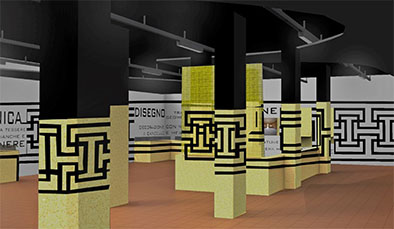Anamorphic installations for urban metamorphosis
DOI:
https://doi.org/10.6092/2281-4574/6638Abstract
This research investigates new ways of reconnecting no-places to the city’s urban fabric. By the term “no-places” is understood those architectural and urban existing spaces where people perceive to be in a decayed and anonymous areas, without identity and ties with the territory due to their shapes and their ways of fruition. The transformation from “no-places” to “new places” is analyzed through the use of the art practices as an instrument of urban regeneration. The point is to recreate the relationship between people and spaces without structural and architectural measures, but modifying those aspects concerning the perception, orientation and recognition likely to have an impact on the fruition and on the sense of belonging to the place. In particular, research focuses on the anamorphic artistic installations; anamorphosis is a geometrical process of optical illusion based on a distorted projection that enables the recognition of the original image watching it from a specific point of view.
The enigmatic and fragmented labyrinth of signs becomes understandable for the observer only when he recomposed it with his eyes and his movement, thereby contributing to define new perception and use of the space. In the first part of the text we analyze some installations that use the anamorphosis as a tool of “urban acupuncture”; in the second part, the Boscoreale railway station constitutes the case study for the application of anamorphosis to a no-place of the urban mobility.
Downloads

Downloads
Published
Issue
Section
License
Gli autori che pubblicano su questa rivista accettano le seguenti condizioni:- Gli autori mantengono i diritti sulla loro opera e cedono alla rivista il diritto di prima pubblicazione dell'opera, contemporaneamente licenziata sotto una Licenza Creative Commons - Attribuzione che permette ad altri di condividere l'opera indicando la paternità intellettuale e la prima pubblicazione su questa rivista.
- Gli autori possono aderire ad altri accordi di licenza non esclusiva per la distribuzione della versione dell'opera pubblicata (es. depositarla in un archivio istituzionale o pubblicarla in una monografia), a patto di indicare che la prima pubblicazione è avvenuta su questa rivista.
- Gli autori possono diffondere la loro opera online (es. in repository istituzionali o nel loro sito web) prima e durante il processo di submission, poiché può portare a scambi produttivi e aumentare le citazioni dell'opera pubblicata (Vedi The Effect of Open Access).

